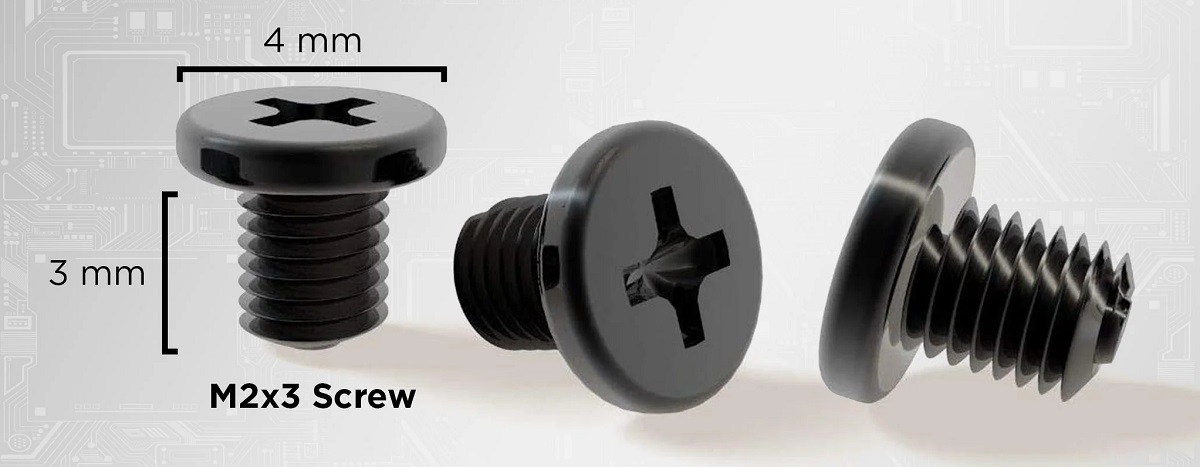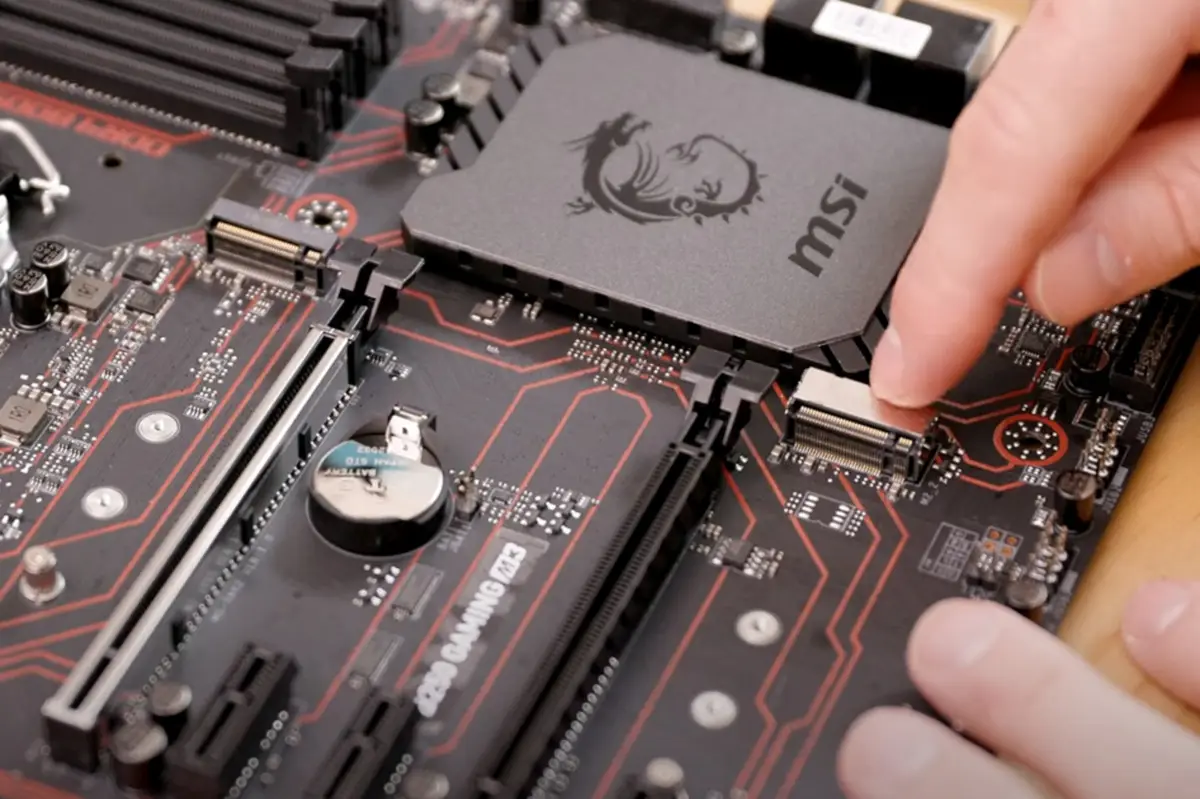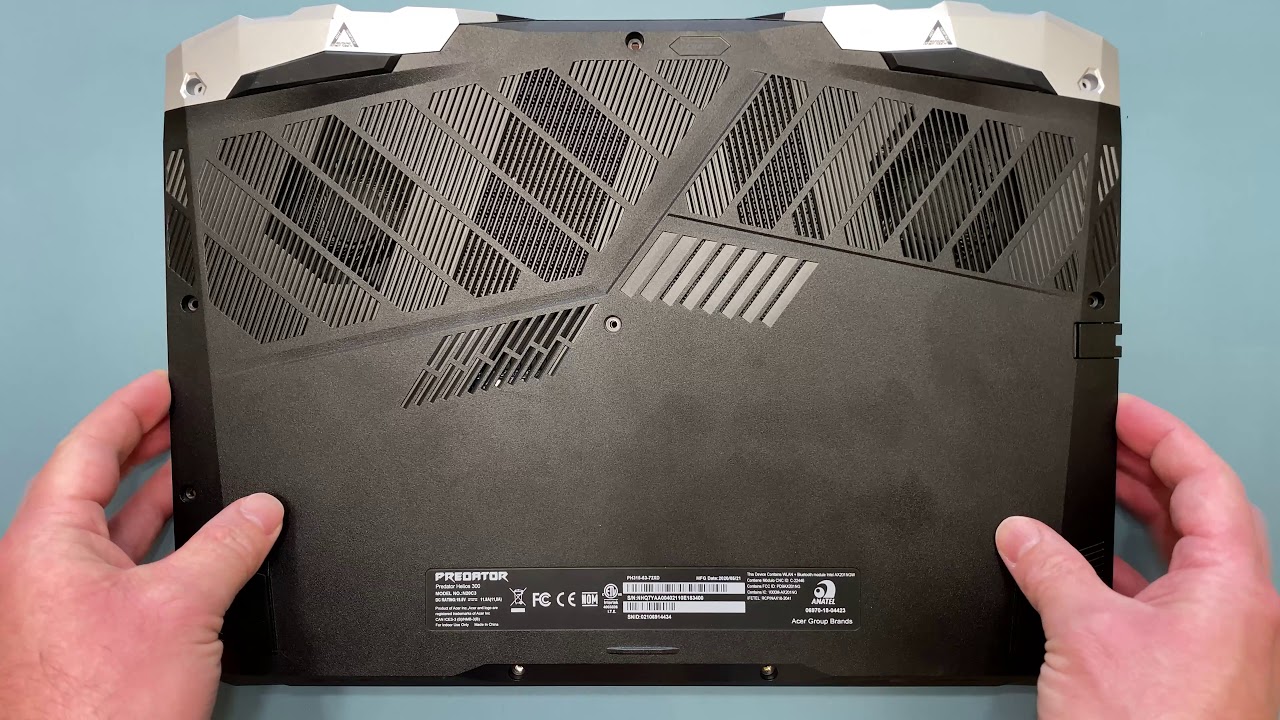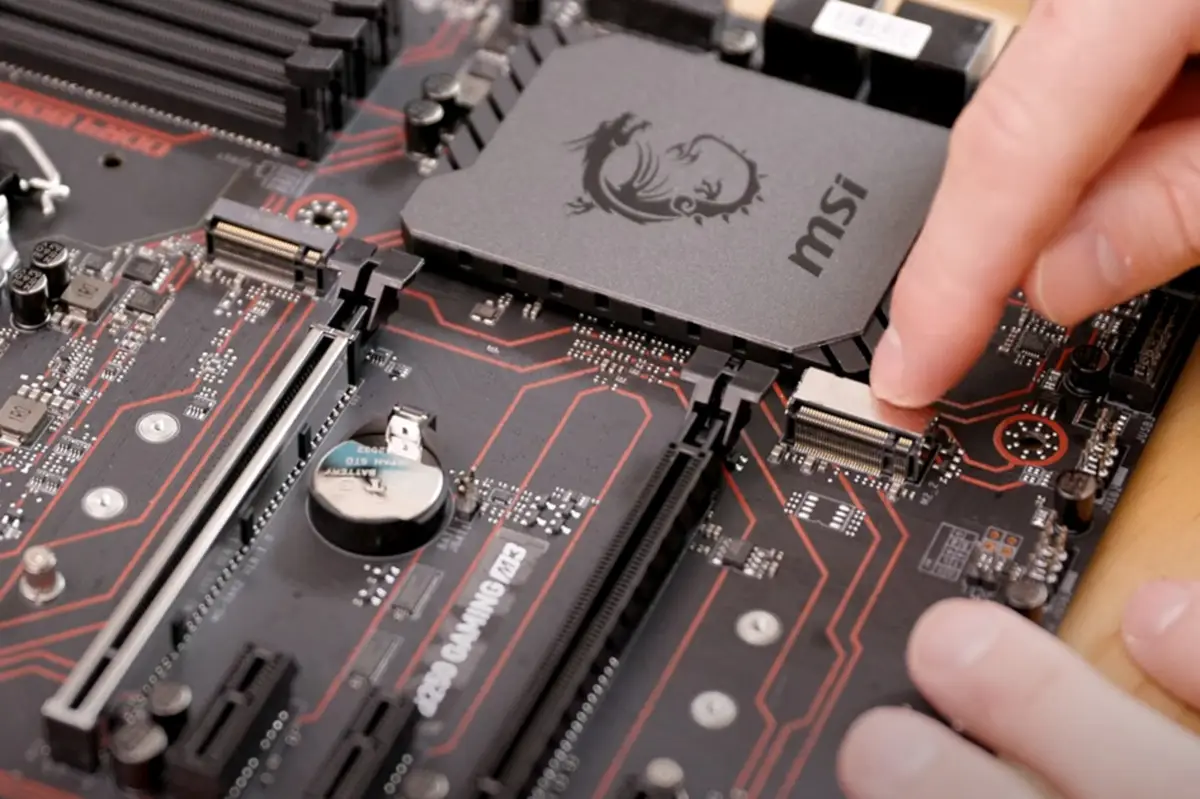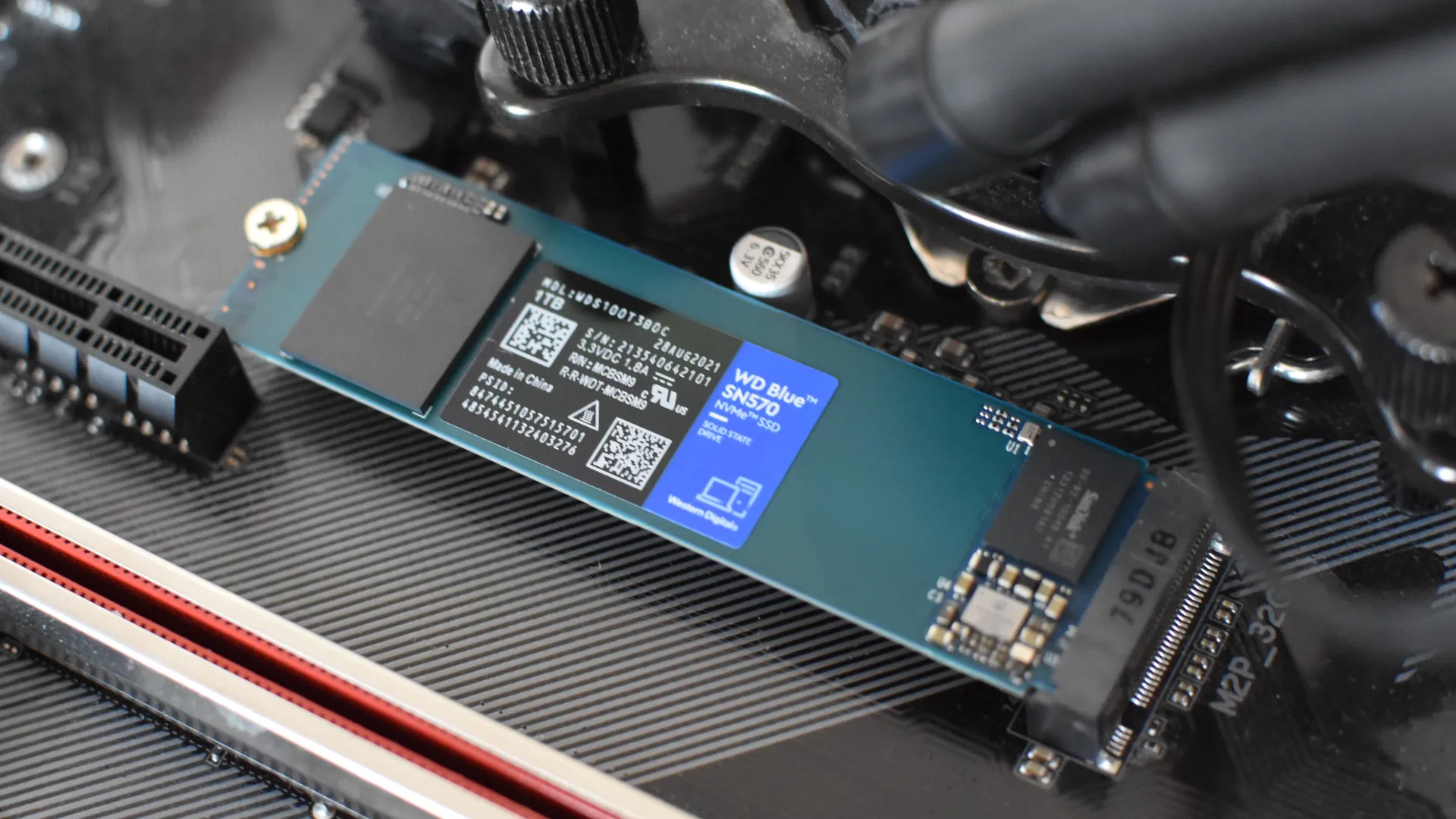Introduction
When it comes to expanding the storage capacity of your computer, adding solid-state drives (SSDs) can be a great solution. SSDs offer faster performance, improved reliability, and reduced power consumption compared to traditional hard drives. However, before you rush to purchase an SSD, it’s essential to determine how many SSD slots your computer has available. This will ensure compatibility and allow you to make an informed decision.
In this article, we will explore various methods to help you identify the number of SSD slots in your computer. We will guide you through checking your computer’s specifications, motherboard specifications, performing a physical inspection, using software to identify SSD slots, consulting the manufacturer’s website or user manual, and seeking professional assistance if needed.
Knowing the number of available SSD slots is crucial for several reasons. Firstly, it helps you understand whether your computer can accommodate additional SSDs. Secondly, it allows you to plan for future upgrades or replacements. Lastly, it helps you choose the appropriate SSD and avoid compatibility issues.
Before we dive into the various methods, it’s important to note that the availability of SSD slots can vary depending on the computer model and manufacturer. Some older or budget-friendly computers may not have any dedicated SSD slots, while high-end systems may offer multiple slots.
Now that we have a basic understanding of the importance of knowing the number of SSD slots, let’s explore the different methods you can use to identify them. By the end of this article, you will have a clear idea of how many SSD slots your computer has and can proceed with confidence in upgrading your storage capacity.
Checking Your Computer’s Specifications
The first and simplest method to determine the number of SSD slots in your computer is to check the computer’s specifications. This information can usually be found on the manufacturer’s website or in the user manual. Here’s a step-by-step guide on how to check your computer’s specifications:
1. Identify your computer’s model: Look for the model number or product name of your computer. This information is typically displayed on the front or back of the computer or can be found in the system settings.
2. Visit the manufacturer’s website: Once you have identified your computer’s model, go to the manufacturer’s website. Look for the support or product page for your specific model.
3. Locate the specifications section: On the product page, search for the specifications section. This section usually contains detailed information about the computer’s hardware components.
4. Check the storage section: Within the specifications, there should be a section dedicated to storage. Look for any mention of SSD slots or drive bays. The manufacturer may specify the number of available slots or indicate compatibility with SSDs.
5. Consult the user manual: If you have the user manual for your computer, it can provide valuable information about the number of SSD slots. Refer to the storage or expansion sections of the manual for specific details.
If the manufacturer’s website or user manual does not provide the necessary information, you may need to explore other methods to determine the number of SSD slots in your computer. However, checking the computer’s specifications is often a quick and reliable way to obtain this information.
Remember, the availability of SSD slots can vary depending on the computer model and configuration. It’s important to check the specifications for your specific computer to ensure accuracy. By following these steps, you can gather the necessary information to proceed with upgrading your storage capacity.
Checking Your Motherboard Specifications
If you are unable to find information about the number of SSD slots in your computer from the manufacturer’s website or user manual, another method is to check the specifications of your motherboard. The motherboard is the main circuit board that connects all the hardware components of your computer. Here’s how you can check your motherboard specifications:
1. Determine your motherboard model: To identify your motherboard model, you can use several methods. The easiest way is to check for any labels or markings on the motherboard itself. If you are unable to locate any labels, you can use system information tools like CPU-Z or Speccy to retrieve the motherboard model.
2. Visit the manufacturer’s website: Once you have identified your motherboard model, visit the manufacturer’s website. Look for the support or product page for your specific model.
3. Locate the specifications section: On the product page, search for the specifications section. This section usually contains detailed information about the motherboard’s features and capabilities.
4. Check the storage section: Within the specifications, look for information about storage capabilities. The manufacturer may specify the number of SATA ports, M.2 slots, or PCIe slots that support SSDs. These slots are typically used for connecting SSDs to the motherboard.
5. Consult the user manual: If you have the user manual for your motherboard, it can provide additional details about the storage options and SSD compatibility. Refer to the storage or expansion sections of the manual for specific information.
By checking your motherboard specifications, you can get a clearer idea of the number of SSD slots available in your computer. Remember, the number of slots may vary depending on the motherboard model and its specific features. Make sure to look for any mention of SATA ports, M.2 slots, or PCIe slots that can accommodate SSDs.
If you are still unsure about the number of SSD slots even after checking your computer’s specifications and motherboard, don’t worry. There are other methods we will explore shortly to help you determine the number of SSD slots in your computer.
Physical Inspection of Your Computer
If you’re unable to find information about the number of SSD slots in your computer through software or online resources, you can perform a physical inspection of your computer. This method involves opening up your computer case and visually inspecting the components. Here’s how you can conduct a physical inspection to identify the number of SSD slots:
1. Power off your computer: Before performing any physical inspection, make sure to power off your computer and disconnect it from any power sources.
2. Remove the computer case: Depending on your computer model, you may need to unscrew or slide open the cover of your computer case. Refer to the user manual for your specific computer if you are unsure how to remove the case.
3. Locate the storage bays: Once the computer case is open, locate the storage bays inside. These are usually located near the front or sides of the case. They may be labeled or color-coded for easy identification.
4. Identify existing SSD slots: Look for any existing SSD slots or connections in the storage bays. SSD slots are typically smaller than traditional hard drive slots and utilize SATA or M.2 connections. They may be empty or already occupied by SSDs.
5. Count the available slots: If there are existing SSD slots present, count the number of available slots that are not occupied. If there are no visible SSD slots, it is possible that your computer does not have dedicated slots for SSDs.
6. Take note of other storage options: While inspecting the storage bays, also pay attention to any other storage options available, such as 2.5-inch drive bays or expansion slots. These slots may be utilized to install SSDs with the help of adapters or brackets.
By physically inspecting your computer, you can determine the number of SSD slots available and if any slots are already occupied. If there are no visible SSD slots, it is possible that your computer does not have dedicated slots for SSDs, or they may be located in a different part of the computer.
Remember to handle the components with care and avoid static electricity by grounding yourself before touching any internal parts. If you are uncomfortable or unsure about performing a physical inspection, it is advisable to seek professional help to avoid any potential damage to your computer.
In the next section, we will explore another method to identify the number of SSD slots in your computer – using software tools specifically designed for this purpose.
Using Software to Identify Number of SSD Slots
If you’re unable to determine the number of SSD slots through your computer’s specifications or physical inspection, another method is to use software tools designed to identify hardware information. These tools provide detailed information about your computer’s components, including the number of SSD slots. Here’s how you can use software to identify the number of SSD slots:
1. Research available software tools: Look for reputable software tools that provide hardware information. Some popular options include CPU-Z, Speccy, HWiNFO, and AIDA64. Visit their respective websites and download the software that best suits your needs.
2. Install and run the software: Once you have downloaded the software, install it on your computer following the on-screen instructions. Launch the software and wait for it to gather hardware information.
3. Locate storage or drive section: Within the software, there should be a section dedicated to storage or drives. Look for any mention of SSD slots, M.2 slots, or PCIe slots that can accommodate SSDs. The software may provide details about the number of available slots or connections.
4. Note the number of SSD slots: Once you have located the storage or drive section, note the number of SSD slots mentioned in the software. This information will give you a clear idea of how many slots your computer has.
5. Cross-reference with other methods: After gathering the information from the software, cross-reference it with the computer’s specifications, motherboard details, or physical inspection to ensure accuracy.
Using software tools to identify the number of SSD slots can provide an easy and reliable way to gather information about your computer’s hardware. These tools provide comprehensive details and may even offer additional information about other components as well.
Keep in mind that the accuracy of the software’s information depends on the compatibility and support for your specific computer model. If the software does not provide the desired information or you are unsure about the results, you can explore other methods mentioned earlier or consult the manufacturer or a professional for further assistance.
In the next section, we will discuss how consulting the manufacturer’s website or user manual can offer valuable insights regarding the number of SSD slots in your computer.
Consult the Manufacturer’s Website or User Manual
When trying to determine the number of SSD slots in your computer, consulting the manufacturer’s website or user manual can be an invaluable resource. The manufacturer often provides detailed information about the hardware specifications, including the number of available SSD slots. Here’s how you can use these resources to gather the necessary information:
1. Visit the manufacturer’s website: Go to the official website of the computer manufacturer. Look for the support or product page relevant to your specific computer model.
2. Search for your computer model: Use the search function on the website to find information about your computer model. This will help you locate the specific product page or support documentation.
3. Look for specifications: On the product page or in the support documentation, search for the specifications section. This section should provide detailed information about the hardware components of your computer.
4. Find the storage or expansion details: Within the specifications section, look for information related to storage or expansion. The manufacturer may explicitly mention the number of SSD slots available, or they may provide details about the type of storage connections supported (such as SATA or M.2) that can help you determine the number of available slots.
5. Refer to the user manual: If you have the user manual for your computer, it can offer additional insights into the number of SSD slots. Refer to the storage or expansion sections of the manual for specific details.
By consulting the manufacturer’s website and user manual, you can obtain accurate and reliable information about the number of SSD slots in your computer. The manufacturer is the best source for information about their specific models, and they often provide comprehensive details to assist users in expanding or upgrading their systems.
If you are unable to find the necessary information through these resources, it’s advisable to contact the manufacturer’s support team directly. They can provide personalized guidance and answer any specific questions you may have regarding the number of SSD slots in your computer.
In the next section, we will discuss the option of seeking professional help if you are still unsure about the number of SSD slots in your computer.
Seeking Professional Help
If you have tried all the methods mentioned earlier and still cannot determine the number of SSD slots in your computer, seeking professional help is a viable option. Computer technicians and experts can provide accurate and detailed information about your computer’s hardware configuration. Here’s how you can seek professional assistance:
1. Find a reputable computer technician: Look for local computer repair shops or technicians who specialize in hardware diagnostics and upgrades. You can also consider reaching out to the manufacturer’s authorized service centers for reliable assistance.
2. Explain your requirements: When contacting the technician or service center, explain that you need help identifying the number of SSD slots in your computer. Provide them with the specific make and model of your computer for efficient assistance.
3. Schedule a consultation or service appointment: Depending on the technician’s availability, you may be asked to schedule a consultation or service appointment. This will allow the technician to assess your computer’s hardware and provide accurate information about the SSD slots.
4. Allow the technician to inspect your computer: During the consultation or service appointment, the technician will perform a thorough inspection of your computer’s internal components. This may involve opening the case and visually identifying the SSD slots or using specialized diagnostic tools.
5. Ask for detailed information: Once the inspection is complete, ask the technician for detailed information about the number of SSD slots in your computer. They should be able to provide accurate and specific details based on their expertise.
Seeking professional help ensures that you receive accurate and reliable information about the number of SSD slots in your computer. Expert technicians have the knowledge and experience to identify and provide detailed specifications about your computer’s hardware configuration.
Keep in mind that professional assistance may come with associated costs, depending on the technician or service center. However, the investment can be worthwhile if you are unsure or need precise information about your computer’s SSD slots.
With the help of a professional, you can confidently proceed with upgrading your storage capacity by adding SSDs to your computer.
In the next section, we will summarize the methods discussed in this article and offer some final thoughts on determining the number of SSD slots in your computer.
Conclusion
Determining the number of SSD slots in your computer is crucial when considering upgrading or expanding the storage capacity. In this article, we have explored various methods to help you identify the number of SSD slots available in your computer.
By checking your computer’s specifications and consulting the manufacturer’s website or user manual, you can gather valuable information about the hardware configuration and storage options. Performing a physical inspection allows you to visually identify any existing SSD slots or connections in your computer.
Using software tools designed for hardware information can provide detailed insights into the number of SSD slots in your computer. These tools retrieve information from your computer’s components and present it in an organized manner.
If you are still unsure or unable to determine the number of SSD slots, seeking professional help from computer technicians or expert service centers is an option. They can provide accurate information and guidance based on their expertise and experience.
It’s important to note that the availability of SSD slots can vary depending on the computer model, manufacturer, and configuration. Therefore, it’s crucial to cross-reference information obtained through different methods for enhanced accuracy.
By employing these methods, you will gain a clear understanding of the number of SSD slots in your computer. This knowledge will empower you to make informed decisions when upgrading or expanding your storage capacity with SSDs.
Remember to handle computer components with care and ensure you take necessary precautions, such as grounding yourself against static electricity when working with internal parts.
With the right information, you can confidently proceed with upgrading your computer’s storage capacity and enjoy the benefits that SSDs offer, including faster performance, improved reliability, and reduced power consumption.
We hope this article has provided you with the necessary guidance to identify the number of SSD slots in your computer. Whether you go through the computer’s specifications, consult the manufacturer’s resources, perform a physical inspection, use software tools, or seek professional assistance, understanding your computer’s storage options is essential for a successful upgrade.
If you have any further questions or require assistance, do not hesitate to reach out to the manufacturer’s support team or consult with a professional technician.










